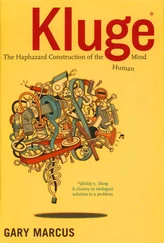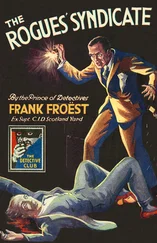1 ...6 7 8 10 11 12 ...18 More recently the Nobel authorities have allowed open access to their earlier thinking, and this has confirmed much of what Dubos had concluded. As part of the system for deciding who should get Nobel Prizes, the Nobel Committee receives proposals from leading experts around the world. In the words of Portugal, who reviewed their working and archives, ‘It seems that key biological chemists were not convinced by Avery’s claim that DNA was the basis of heredity.’ Not a single geneticist nominated Avery for the Nobel Prize. In part this may have reflected a difficulty in extrapolating his discovery in a single type of bacterium to genetics more widely, but even those colleagues who did nominate him for the Nobel Prize tended to overlook his work on DNA in favour of his immunological typing of the pneumococcal capsule. Portugal also wondered if Avery’s own idiosyncratic behaviour, including his reluctance to meet with and exchange findings with colleagues, and in particular geneticists, at scientific meetings had unintentionally confounded the acceptance of his groundbreaking discovery.
We are left with a lingering sense of regret that Avery was not accorded the recognition he deserved. He was 67 years old when his iconoclastic paper was published. It was, in the words of the eminent biochemist Erwin Chargaff, the rare instance of an old man making a major scientific discovery. ‘He was a quiet man: and it would have honoured the world more, had it honoured him more.’
But there is a greater acknowledgement of discovery than the awarding of a prize, no matter how respected and prestigious. In the words of Freeland Judson, ‘Avery opened up a new space in biologists’ minds.’ By space he meant he had unravelled a major truth, revealing new unknowns and raising important new questions. Avery himself had, with quintessential modesty, touched upon those important new questions in his letter to his brother:
If we are right, and of course that is not yet proven, then it means that nucleic acids are not merely structurally important but functionally active substances in determining the biochemical activities and specific characteristics of cells – and that by means of a known chemical substance it is possible to induce predictable and hereditary changes in cells. This is something that has long been the dream of geneticists … Sounds like a virus – may be a gene. But with mechanisms I am not now concerned – one step at a time – and the first is, what is the chemical nature of the transforming principle? Someone else can work out the rest …
three
The Story in the Picture
You look at science (or at least talk of it) as some sort of demoralising invention of man, something apart from real life, and which must be cautiously guarded and kept separate from everyday existence. But science and everyday life cannot and should not be separated.
ROSALIND FRANKLIN
The discovery of the ‘transforming substance’ by Avery, MacLeod and McCarty, confirmed by Hershey and Chase’s elegant experiment with the bacteriophage, proved that DNA was the molecule of heredity. But both groups were working with microbes, bacteria and viruses, which were known to be much simpler in their hereditary nature than, say, animals and plants. This left huge unknowns that needed to be explored. Was DNA the key to the heredity of all of life, or was it just relevant to bacteria and viruses? By the early 1950s, work in many different laboratories had confirmed that DNA was a major ingredient in the nuclei of animals and plants. This supported the idea that DNA was the coding molecule of life. But if so, how did it really work? How, for example, did a single chemical molecule code for the complex heredity of a living organism?
Biologists, doctors, molecular biochemists and geneticists were now asking themselves the same, or similar, questions. Critical to any such understanding was the precise molecular structure of DNA. If, for example, we were to regard the role of DNA as akin to a stored genetic memory, how did that molecular structure enable the quality of such a phenomenally complex memory? How was that genetic memory transferred from parents to offspring? How did the same stored memory explain embryological development, where a single cell arising from the genomic union of a paternal sperm and maternal ovum gives rise to the developing human embryo and future adult human being?
There was another profoundly important question.
Darwinian evolution lay at the heart of biology. To put it simply, Darwin’s idea of natural selection implied that nature selected from a range of variations in the heredity of different individuals within a species. The way in which it worked was exceedingly simple, if brutal. Those individuals, and by inference their variant heredities, who carried a small advantage for survival and thus a better chance of giving rise to offspring, would therefore be more likely to contribute to the species gene pool. In reality natural selection worked more through a process of attrition. Those less advantaged individuals who did not carry the advantage for survival, were more likely to perish in the struggle for existence, and thus they were less likely to contribute to the species gene pool.
This is what Darwinian evolutionary biologists refer to as ‘relative fitness’. It is the measure of the individual’s contribution to the species gene pool. Certainly it has nothing to do with racist notions of superiority and inferiority attached to ‘survival of the fittest’ – a term introduced not by Darwin but by the social philosopher Herbert Spencer. But if we take a pause and think about it, such variant heredity, essential for natural selection to work, must also come about through mechanisms involving this wonder molecule, DNA, which must lie not only at the heart of heredity but also at the absolute dead centre of evolution. All of these questions needed to be answered by the scientists now struggling to understand the structure and, assuming structure was function, the properties of this remarkable chemical, DNA.
In fact the first step towards answering these questions had already been taken back in 1943, in what might appear unlikely circumstances. It was taken not by a biochemist, biologist or geneticist, but by an Austrian physicist. The spark was lit when, at 4.30pm on Friday 5 February, Erwin Schrödinger stepped up to the podium in Dublin to deliver a lecture that is now seen as a landmark moment in the history of biology. Schrödinger had been awarded the Nobel Prize in 1933 for work in quantum physics that expanded our understanding of wave mechanics – but I won’t confuse myself or my readers by entering further into the physics. The simple facts were that Schrödinger had exiled himself from his native Austria in protest at human rights abuses and had been given sanctuary in neutral Ireland by its President, Eamon de Valera. In Dublin Schrödinger had helped found the Institute for Advanced Studies. As part of his duties in support of the Institute, he had agreed to give a series of three lectures in which he developed a central theme: ‘What Is Life?’
Such was Schrödinger’s fame that the lecture theatre, which had a seating capacity for 400, could not accommodate all who wished to attend the lectures – this despite the fact that they had been warned in advance that the subject matter was a difficult one and that the lecture was not going to be pitched at an easy or popular level, even though Schrödinger had promised to eschew mathematics. De Valera himself was present in the audience, as were his cabinet ministers and a reporter for Time magazine. One wonders what these politicians and journalists made of Schrödinger’s focus on ‘how the events in space and time which take place within the spatial boundary of a living organism can be accounted for by physics and chemistry’.
Читать дальше












